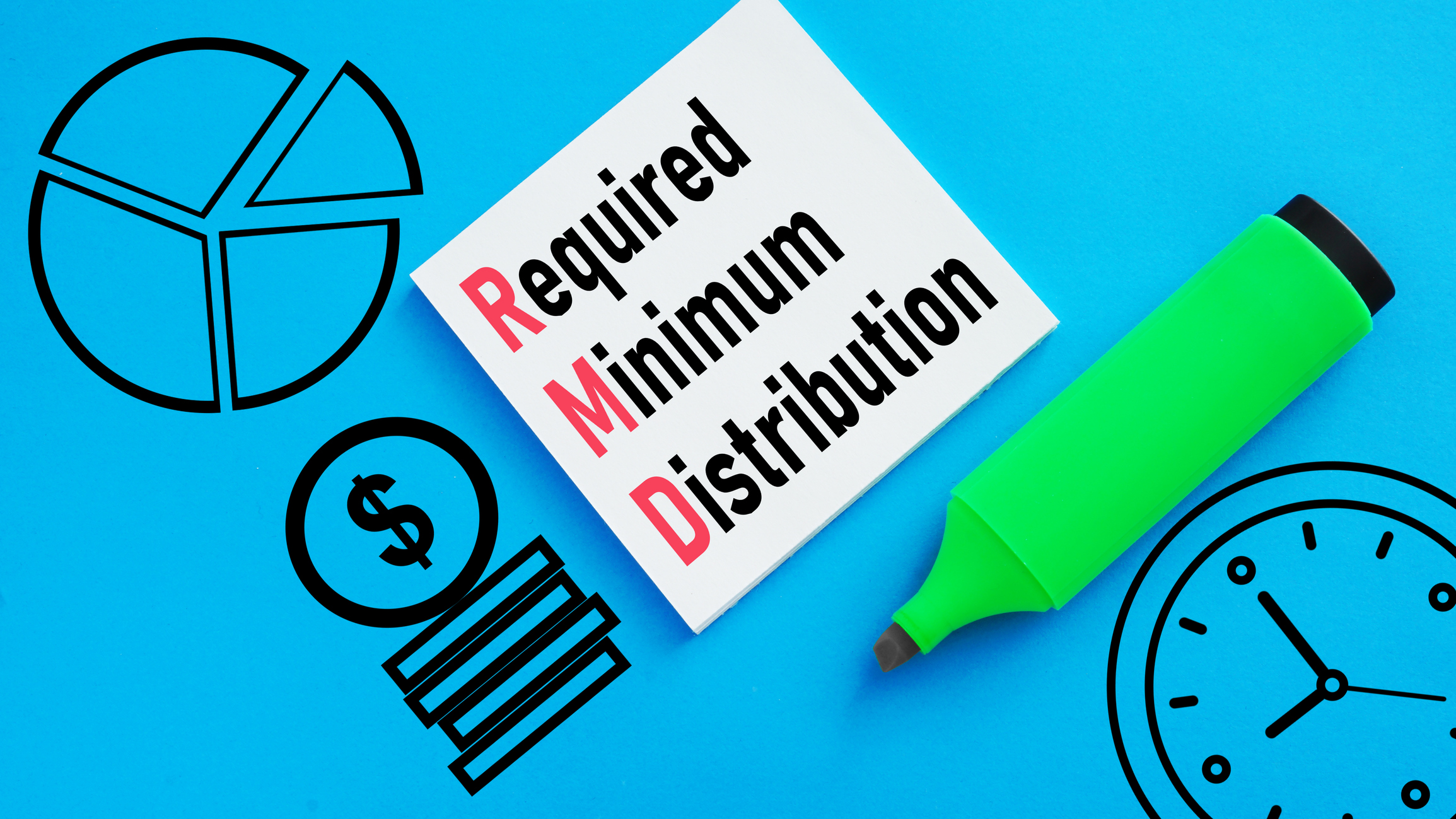Will RMDs Ruin the 4% Rule for You?
Don't let required minimum distributions (RMDs) rain on your retirement parade.


Will RMDs ruin the 4% rule for you in retirement? It's quite possible if you have a good chunk of your retirement savings in traditional accounts. To some degree, building that retirement nest egg is easy. You set aside money each month to go into your IRA or 401(k), invest it in an S&P 500 index fund or collection of stocks, and wait for it to compound.
It’s managing your savings in retirement that’s the tricky part.
Once you’ve accumulated wealth, you don’t want to risk having your nest egg dry up. A recent Allianz survey found that 64% of respondents worry more about running out of money than actually dying, which speaks to the importance of withdrawing from your savings carefully.
From just $107.88 $24.99 for Kiplinger Personal Finance
Become a smarter, better informed investor. Subscribe from just $107.88 $24.99, plus get up to 4 Special Issues

Sign up for Kiplinger’s Free Newsletters
Profit and prosper with the best of expert advice on investing, taxes, retirement, personal finance and more - straight to your e-mail.
Profit and prosper with the best of expert advice - straight to your e-mail.
To that end, there’s some guidance in the form of the 4% rule.
The 4% rule goes as follows: Withdraw 4% of your savings in your first year of retirement. Repeat that 4% withdrawal in future years while making adjustments for annual inflation. Do this consistently, and your savings are likely to last 30 years.
Of course, not everyone agrees with the 4% rule. In 2024, Morningstar recommended a 3.7% withdrawal rate for retirees due to stock market valuations and bond yields at the time. (That said, Morningstar stuck with 4% in 2023, when bond yields were slightly more favorable.)
Nonetheless, many financial professionals think 4% is a safe withdrawal rate, for the most part. And you may be inclined to stick with it for your retirement. But will required minimum distributions (RMDs) get in your way?
When RMDs ruin the 4% rule
The IRS offers traditional IRA and 401(k) savers some pretty great perks — tax-free contributions and tax-deferred growth. In exchange, the IRS wants IRAs and 401(k)s to be used for their intended purpose, and not as a loophole for wealthy people to pass money on to future generations in a tax-advantaged manner.
For this reason, the IRS forces savers born between 1951 and 1959 to take Required Minimum Distributions (RMDs) from these accounts starting at age 73. For those born in 1960 or later, RMDs start at 75.
Your RMD calculation changes every year based on the fair market value of your retirement account that’s subject to those withdrawals and your life expectancy. For this reason, as people age, their RMDs can increase. But that could make it difficult to stick to the 4% rule.
If you have a large IRA or 401(k) that’s subject to RMDs, as you get older, you may find that your mandatory withdrawal amount is greater than 4% of your total nest egg.
Remember, RMDs may not apply to every account you’re holding in retirement. But if a 4% withdrawal rate applied to all of your accounts results in $38,000 and your RMD amount is $45,000, you’re effectively being forced to withdraw from your savings at a higher rate.
Working around RMDs
While it’s clear that RMDs could make it difficult to stick to a 4% withdrawal rate, there are workarounds.
Reinvest rather than spend.
As Drew Boyer, CFP and Founder at Boyer Financial Group explains, if your RMD is greater than 4% of your total assets, the solution is simply not to spend it all.
“If your RMD is higher than 4%, it’s the IRS’s distribution calculator you must follow. But your spending patterns don’t need to change,” he says. “If you are forced to take out 6%, you don’t need to spend 6%. You can still spend 4% but reinvest the excess amount.”
One caveat is that you can’t put an RMD back into a tax-advantaged account. But a taxable brokerage account is fair game, Boyer says. I-bonds could be an appropriate investment for you, too, depending on your risk tolerance and what interest rates look like.
And there’s no rule stating you have to invest RMD funds you don’t want or need to spend. You can put the money into a savings account or CD if there’s no specific investment that aligns with your goals. Either way, you’re preserving the cash rather than spending it.
Avoid RMDs with Roth conversions.
Another option? Get ahead of RMS by doing a Roth conversion.
James Hutchens, National Practice Lead for Wealth Advisory at Northern Trust, says, “Big RMDs can be planned for. A Roth conversion is a potential workaround if your planning horizon is long enough and you use other assets to pay the income tax bill associated with the conversion. This reduces the amount that is subject to RMDs.”
That said, Hutchens warns that Roth conversions need to be timed carefully. Not only do they increase your taxable income the year you make them, but they can have other impacts.
As Hutchens points out, having a large income in any given year could result in Medicare surcharges known as income-related monthly adjustment amounts (IRMAA) two years later.
That’s why “a conversion should be considered after careful consideration of income flows, goals, and your planning horizon,” Hutchens insists.
Handle large RMDs with a qualified charitable distribution.
Finally, Boyer says, you can consider a qualified charitable distribution if you end up with an RMD that well exceeds the 4% mark. This won't help you lower your withdrawal rate, but it could help you avoid a big tax bill.
"It satisfies your mandatory RMD and helps pay it forward for those in need," says Boyer. "That’s a win-win move that’s tax-smart."
Read More
Profit and prosper with the best of Kiplinger's advice on investing, taxes, retirement, personal finance and much more. Delivered daily. Enter your email in the box and click Sign Me Up.

Maurie Backman is a freelance contributor to Kiplinger. She has over a decade of experience writing about financial topics, including retirement, investing, Social Security, and real estate. She has written for USA Today, U.S. News & World Report, and Bankrate. She studied creative writing and finance at Binghamton University and merged the two disciplines to help empower consumers to make smart financial planning decisions.
-
 7 Ways to Save Money on Almost Everything
7 Ways to Save Money on Almost EverythingHigh prices got you down? These strategies can help you reap deep discounts on everyday spending.
-
 My Top 10 Stock Picks for 2026
My Top 10 Stock Picks for 2026Each year, we ask an expert to pick 10 stocks that have the potential to beat the market over the next 12 months. Here are his choices for 2026.
-
 Special Report: The Future of American Politics
Special Report: The Future of American PoliticsThe Kiplinger Letter The Political Trends and Challenges that Will Define the Next Decade
-
 Now That You've Built Your Estate Planning Playbook, It's Time to Put It to Work
Now That You've Built Your Estate Planning Playbook, It's Time to Put It to WorkYou need to share details with your family (including passwords and document locations) and stay focused on keeping your plan up to date.
-
 I'm a Wealth Adviser: These 10 Strategies Can Help Women Prepare for Their Impending Financial Power
I'm a Wealth Adviser: These 10 Strategies Can Help Women Prepare for Their Impending Financial PowerAs women gain wealth and influence, being proactive about financial planning is essential to address longevity and close gaps in confidence and caregiving.
-
 How to Make 2026 Your Best Year Yet for Retirement Savings
How to Make 2026 Your Best Year Yet for Retirement SavingsMake 2026 the year you stop coasting and start supercharging your retirement savings.
-
 You Saved for Retirement: 4 Pressing FAQs Now
You Saved for Retirement: 4 Pressing FAQs NowSaving for retirement is just one step. Now, you have to figure out how to spend and maintain funds. Here are four frequently asked questions at this stage.
-
 I'm a Financial Planning Pro: This Is How You Can Stop These 5 Risks From Wrecking Your Retirement
I'm a Financial Planning Pro: This Is How You Can Stop These 5 Risks From Wrecking Your RetirementYour retirement could be jeopardized if you ignore the risks you'll face later in life. From inflation to market volatility, here's what to prepare for.
-
 Are You Hesitating to Spend Money You've Spent Years Saving? Here's How to Get Over It, From a Financial Adviser
Are You Hesitating to Spend Money You've Spent Years Saving? Here's How to Get Over It, From a Financial AdviserEven when your financial plan says you're ready for a big move, it's normal to hesitate — but haven't you earned the right to trust your plan (and yourself)?
-
 7 Ways to Age Gracefully Like the Best Stock Photo Seniors
7 Ways to Age Gracefully Like the Best Stock Photo SeniorsAs a retirement editor, I've gleaned valuable wisdom (and a lot of laughs) from one older couple that tops the seniors' stock photo charts.
-
 Time to Close the Books on 2025: Don't Start the New Year Without First Making These Money Moves
Time to Close the Books on 2025: Don't Start the New Year Without First Making These Money MovesAs 2025 draws to a close, take time to review your finances, maximize tax efficiency and align your goals for 2026 with the changing financial landscape.